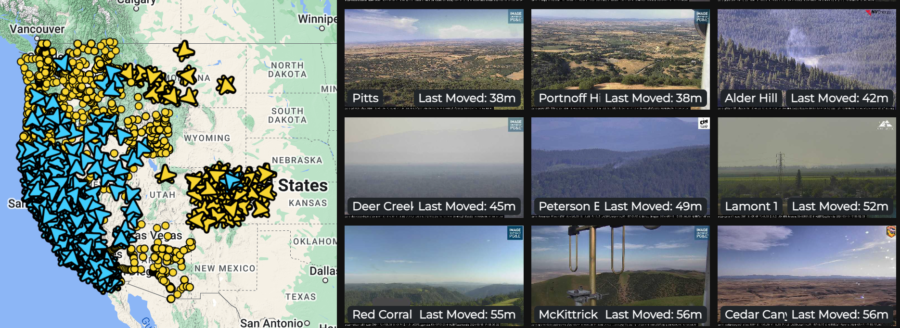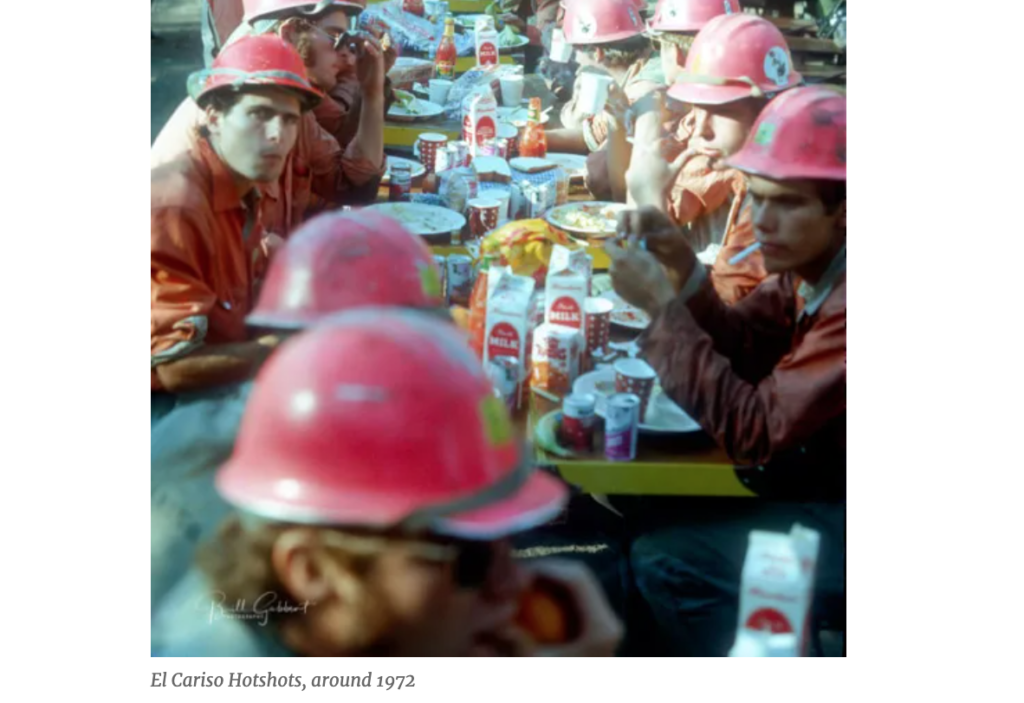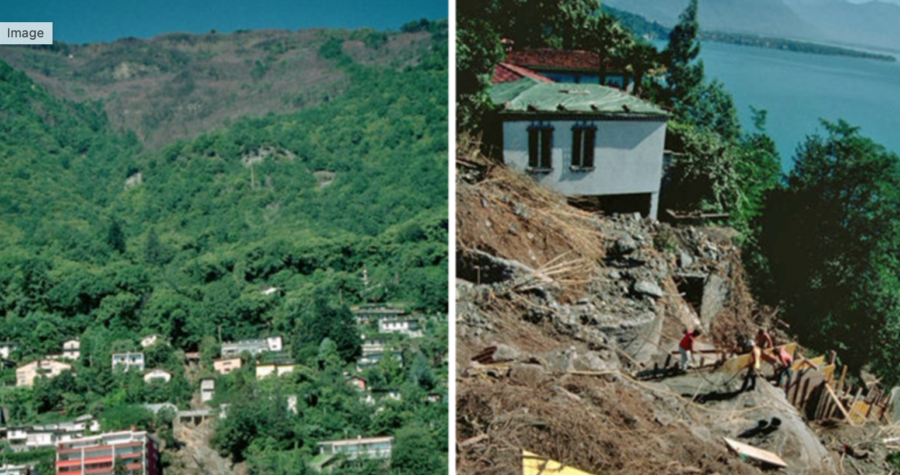The Oregon Hazards Lab has developed and operates a high-speed camera network that gives fire managers new ways to detect and track wildfires. Cameras are installed atop high peaks or even high-rise buildings with 360-degree views of the surrounding area. Each camera can zoom, rotate, and tilt, allowing users to monitor the landscape, smokes, fire behavior, and weather conditions in real-time, or review later through time-lapse footage. The Oregon camera network is integrated with those operated by collaborators including the University of Nevada in Reno and the University of California at San Diego, with dozens of cameras in Oregon and thousands in the Western states.
The Oregon Hazards Lab network at the University of Oregon has helped put together the largest public-facing camera system in the world.
Doug Toomey, the lab’s director, says, “The cameras are visible during the day, and you can see twenty to forty miles on a clear day. At night they go near infrared, and you can actually see much farther.”
He told KEZI that detecting smoke on the cameras is only the first step. “There’s an operations center where they’re alerted when this camera spots something.”
There are currently 45 wildfire cameras in Oregon, and the Lab plans to operate 75 across the state by late 2025. These cameras help fire managers:
-
-
-
- Detect, locate, and confirm ignitions
- Quickly scale resources up or down
- Monitor fire behavior from ignition to containment
- Improve local evacuations and situational awareness
-
-
The increased situational awareness available with the cameras means fire managers can confirm 911 calls by reviewing camera footage instead of dispatching personnel or aircraft for reconnaissance. Not only is this safer and less expensive, but it frees up resources that may be needed elsewhere. Fire managers can also monitor prescribed fires, and utility companies can monitor their resources during red flag conditions.
Diane Braun, a former hotshot, said she thinks the cameras would have been a valuable resource when she was on the fireline. “It would have changed the industry,” she says, “from start to finish.” Toomey adds that the cameras play a role before a fire even starts; he says the cameras help to evaluate fuels and weather conditions in the area, including winds, humidity, and other factors before fire crews even arrive.

The network lets people monitor cameras online. Toomey said he thinks the system can help people watch fire conditions and understand the threats — and even take steps in wildfire prevention. Agencies including the Oregon Department of Forestry have access to the camera system. Jessica Neujahr with ODF said using the cameras helps them not only detect smoke, but also dispatch resources faster and get a preview of the landscape they’re heading into.
==> WATCH LIVE CAMERA FEEDS HERE <==
The detection cameras are powered by ALERTWest, a technology platform from DigitalPath. This platform uses artificial intelligence to enable rapid wildfire detection. AI technology pulls the camera feeds from cloud servers and scans images for ignitions using detection algorithms and then can alert dispatch centers. Dispatchers then confirm the detection before alerting responding agencies. Fire managers in Oregon will begin receiving the automated alerts during the 2024 season.















